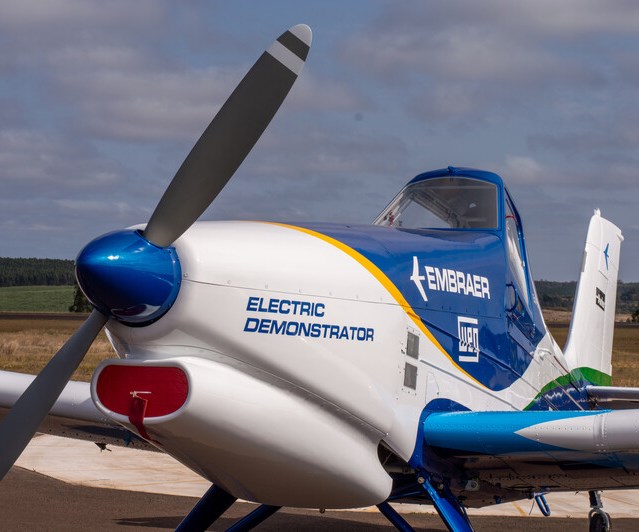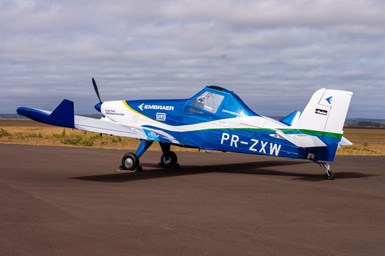Embraer develops electric propulsion demonstrator aircraft
The first flight of the 100% electric propulsion single-aisle aircraft is scheduled for 2020.

Source | Embraer
Embraer (São José dos Campos, Brazil) recently unveiled a new under-development demonstrator aircraft with 100% electric propulsion technology.
The company says that the prototype has a special paint scheme and is ready to receive systems and components. The aircraft's electric motor and controller are being manufactured by WEG Industries (Jaraguá do Sul, Santa Catarina, Brazil) as part of a scientific and technological cooperation agreement between the two companies. Parker Aerospace (West Chester Township, Ohio, U.S.) will supply the cooling system for the demonstrator aircraft.
The first flight of the prototype is scheduled for 2020.

Source | Embraer
According to Embraer, over the next few months, the companies' technical teams will continue testing the aircraft’s systems in a laboratory setting in preparation for testing under real operating conditions.
The partnership between Embraer and WEG Industries, announced in May of this year, targets the research and development of aeronautical electrification, Embraer says. As part of the program, a small single-engine aircraft, based on the EMB-203 Ipanema, will be used as test bed, carrying out the initial evaluation of the electrification technology.
Related Content
-
The potential for thermoplastic composite nacelles
Collins Aerospace draws on global team, decades of experience to demonstrate large, curved AFP and welded structures for the next generation of aircraft.
-
Combining multifunctional thermoplastic composites, additive manufacturing for next-gen airframe structures
The DOMMINIO project combines AFP with 3D printed gyroid cores, embedded SHM sensors and smart materials for induction-driven disassembly of parts at end of life.
-
Otto Aviation launches Phantom 3500 business jet with all-composite airframe from Leonardo
Promising 60% less fuel burn and 90% less emissions using SAF, the super-laminar flow design with windowless fuselage will be built using RTM in Florida facility with certification slated for 2030.
.jpg;width=70;height=70;mode=crop)





